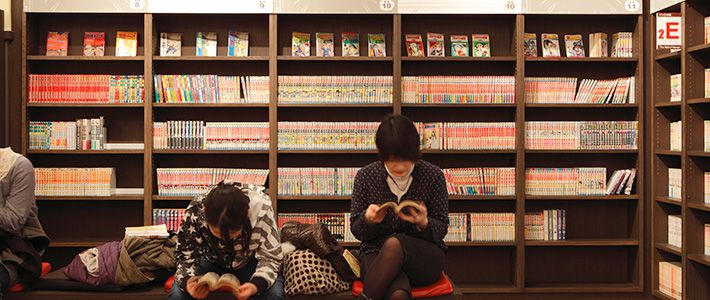
Kyoto at the Forefront of the Manga World
Kyoto’s Manga Museum
Culture- English
- 日本語
- 简体字
- 繁體字
- Français
- Español
- العربية
- Русский
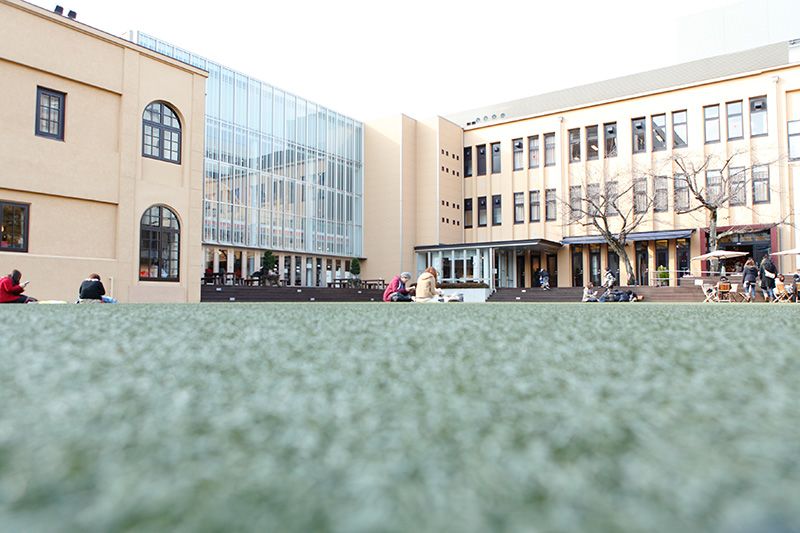 The museum has an atmospheric, old-fashioned appearance, being housed inside a building that dates back more than 100 years, and was originally used as an elementary school. In good weather, visitors can sprawl out on the lawns and enjoy their favorite manga in the open air.
The museum has an atmospheric, old-fashioned appearance, being housed inside a building that dates back more than 100 years, and was originally used as an elementary school. In good weather, visitors can sprawl out on the lawns and enjoy their favorite manga in the open air.
In Japan, manga are more than just an archetypal element of popular culture, appealing to readers of all ages. They have also become an important subject of academic research, and are attracting growing numbers of readers and fans around the world. It was against this background that the Kyoto International Manga Museum opened in November 2006.
The museum is administered jointly by the Kyoto City government and Kyoto Seika University, which has been a leader in the academic study of manga for nearly 40 years. The university opened the world’s first dedicated manga department the same year that the museum was opened.
The young and the old; lost in their manga
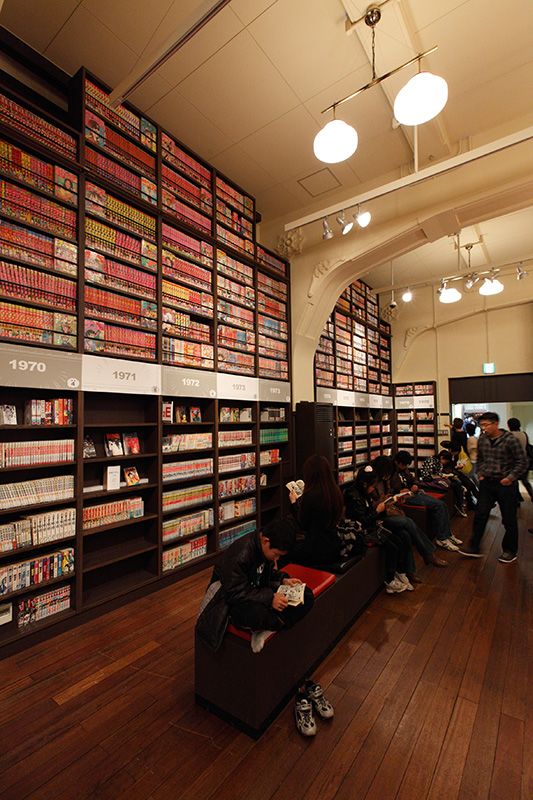 The museum owns around 300,000 manga and animation publications, making it one of the largest collections in the world. Although the core of the collection is made up of modern Japanese manga, the museum also has extensive holdings from around the world and older Japanese manga dating back as far as the Meiji era (1868–1912). Around 50,000 are available for visitors to take down from open bookshelves.
The museum owns around 300,000 manga and animation publications, making it one of the largest collections in the world. Although the core of the collection is made up of modern Japanese manga, the museum also has extensive holdings from around the world and older Japanese manga dating back as far as the Meiji era (1868–1912). Around 50,000 are available for visitors to take down from open bookshelves.
These bookshelves form one of the highlights of the museum: The Wall of Manga, a floor-to-ceiling stack of manga that stretches more than 200 meters through the building. The books are arranged by date and author’s name, and date mostly from the 1970s to 2005.
This is the perfect place for manga enthusiasts to hunt down that elusive out-of-print volume. Touch panels around the museum help readers track down the title they are looking for.
Throughout the museum, visitors sit in silence, absorbed in their manga. An air of peacefulness fills the musuem.
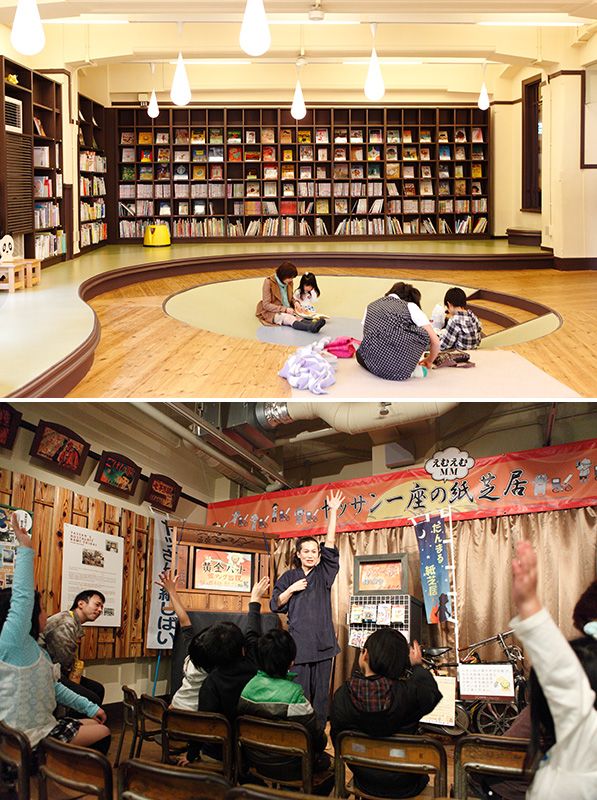 (Above) The Children’s Library specializes in picture books for small children. The children kick off their shoes and make themselves at home with their favorite books. (Below) Danmaru: one of the storytellers in Yassan’s Nostalgic Kamishibai
(Above) The Children’s Library specializes in picture books for small children. The children kick off their shoes and make themselves at home with their favorite books. (Below) Danmaru: one of the storytellers in Yassan’s Nostalgic Kamishibai
Many of the visitors are families with children: a mother and her picture-loving daughter, here to take part in a workshop; a ten-year-old from Shiga Prefecture on a pilgrimage with her father, a committed manga fan eager to pass on his enthusiasm to the next generation. The museum offers plenty for adults and children alike to enjoy and often helps to bring the generations together, although this father, momentarily neglectful of his daughter as he searches for the next item on his reading list, may not be the best example.
The museum also holds special storytelling performances for children. Staff call out through the museum, announcing the start of the event with the aid of hyōshigi, resonant wooden clappers traditionally used to signal the start of a theatrical performance. The children rush excitedly to their seats, where they are held spellbound by a performance of kamishibai (paper theater) storytelling, in which the narrator tells a story with the aid of pictures. Once a familiar sight around the country, this traditional entertainment has all but vanished from Japan’s streets since the advent of television in the 1950s. The Manga Museum is perhaps the only place in the country where performances are held on a daily basis. The father of an elementary school boy proudly tells his son that Mizuki Shigeru, a famous manga artist, got his start as a kamishibai storyteller before he started drawing. Then with a hint of embarrassment, he admits: “Actually, this is the first time that I’ve seen a real kamishibai performance myself.”
A Meeting Place for Manga Lovers
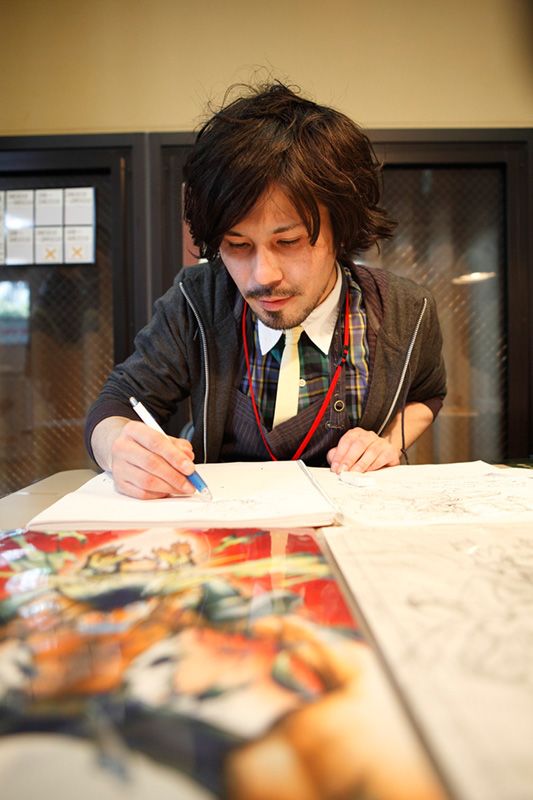 Kojima Eiyu from the Manga Studio Editor’s Desk is a graduate of Kyoto Seika University.
Kojima Eiyu from the Manga Studio Editor’s Desk is a graduate of Kyoto Seika University.
There is also the opportunity to see manga being drawn. At the Manga Studio, visitors can watch professional manga artists at work. The Manga Studio Editor’s Desk is next door, where budding artists can consult the professionals for tips and advice.
Professional artist Kojima Eiyu says, “Manga artists tend to do a lot of their work alone in their apartments. It makes a nice change to draw in front of an audience. And it’s nice to have an opportunity to mingle with aspiring young artists aiming to enter the profession.”
 The museum shop is packed full of manga merchandise. Yokota Saki, a self-described manga geek (on the left in the picture), has traveled to the museum from Osaka many times to buy manga goods. Her clothing style is influenced by the “Cosplay” look. Cosplay events are just one of the musuem’s many attractions.
The museum shop is packed full of manga merchandise. Yokota Saki, a self-described manga geek (on the left in the picture), has traveled to the museum from Osaka many times to buy manga goods. Her clothing style is influenced by the “Cosplay” look. Cosplay events are just one of the musuem’s many attractions.
The museum has become a place where researchers and regular fans mix, says Jaqueline Berndt, a professor who specializes in manga at Kyoto Seika University: “The Manga Museum holds study meetings and seminars that are open to the general public. For me as an academic studying manga, being able to keep in touch with regular readers in this way is invaluable. In that sense, the museum is providing an important service by serving as a venue for people to get involved from beyond the confines of the academic community. I always have my students take part in the sessions here and write papers on their findings as part of their class assignments.”
In addition to the permanent exhibitions, workshops, and seminars, special themed exhibitions and related talks bring added energy and vitality to the overall experience of the museum.
Manga Fans from Abroad
One of the things that makes the museum especially valuable is the way it manages to combine Japan’s popular culture with the traditional historical attractions of Kyoto. Tourists from abroad are frequent visitors, with national heritage sites like Nijō Castle and the Kyoto Imperial Palace nearby.
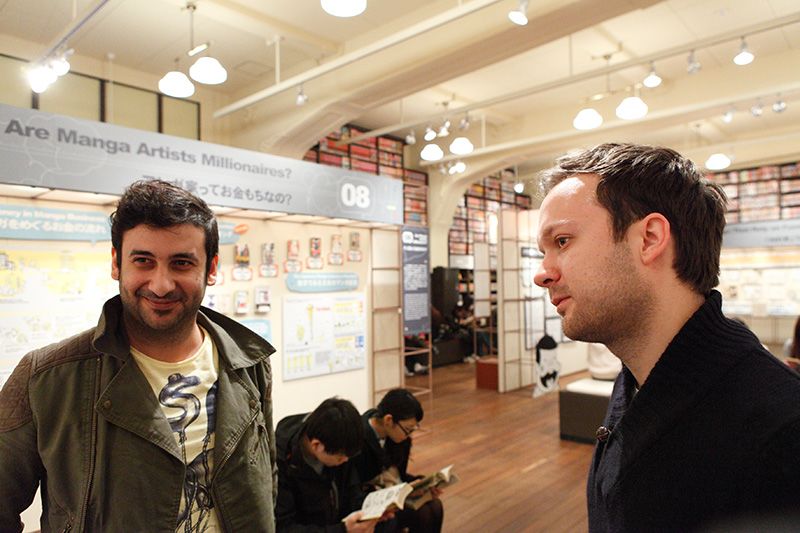 “When I found out about the Manga Museum from my guidebook, I was delighted. My very first contact with Japan came through manga,” says Farsam, a tourist from Germany (on the left in the picture).
“When I found out about the Manga Museum from my guidebook, I was delighted. My very first contact with Japan came through manga,” says Farsam, a tourist from Germany (on the left in the picture).
“My favorites are things like Death Note and Gin Tama. In Germany, with the exception of famous series like Dragon Ball, manga are often quite expensive to buy, so I often visit the library to read them. But I never imagined there would be an enormous library like this dedicated to manga,” he says with deep feeling, as might be expected from someone who says he has loved manga for 15 years. His friend Sven says, “It was interesting to learn about the history and origins of Japan’s manga culture. It’s wonderful that all the timelines and displays are clearly labeled in English.” Despite not being a committed manga fan, he enjoyed the museum.
The Kyoto International Manga Museum opened its doors in November 2006. By the end of March 2012, a total of some 1.4 million people had visited. For many of these visitors, a visit serves as a reminder of the special pleasures to be had from manga—as well as provoking surprise in many when they learn that are now the subject of serious academic study.
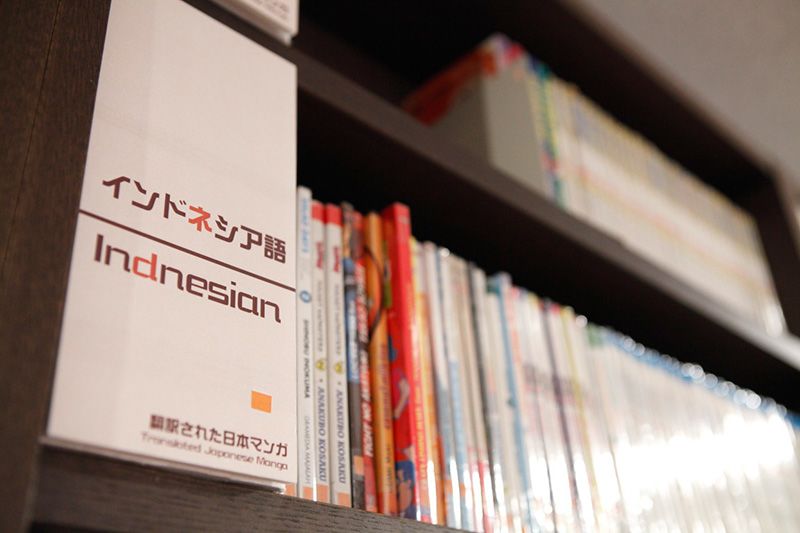 The Manga Expo section of the museum contains a collection of around 5,300 manga in a variety of foreign languages.
The Manga Expo section of the museum contains a collection of around 5,300 manga in a variety of foreign languages.
Museum director Ueda Shūzō says, “We may be a museum, but that doesn’t mean we are going to be content with just providing visitors with a bunch of old manga to read. Our purpose is to act as a place for interaction and communication. In that sense, things like the Manga Studio and Kamishibai storytelling sessions will continue to be very important aspects of our work.”
In recent years people have tended to focus on manga as a Japanese export to the world. But it is important to remember that manga continues to play an important role as culture, producing communication between people.
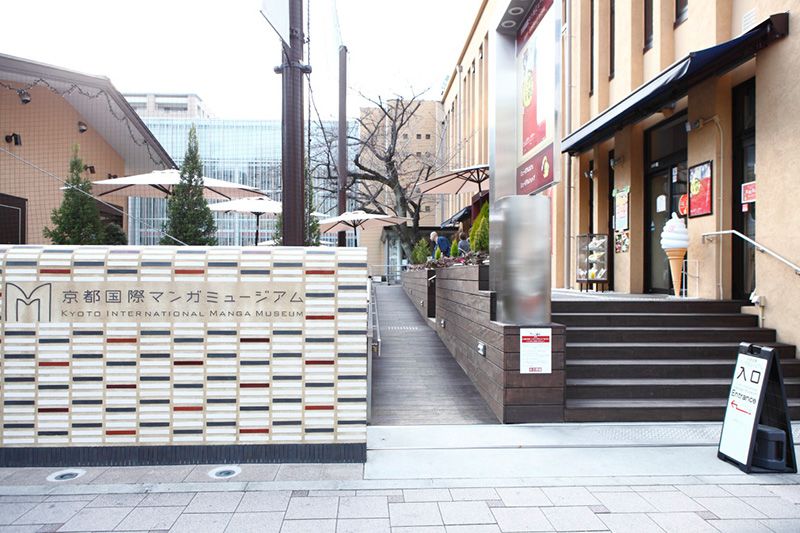 Kyoto International Manga Museum
Kyoto International Manga Museum
Karasumadōri-Oike, Nakagyō-ku, Kyoto (Formerly Tatsuike Elementary School)
TEL:075-254-7414
http://kyotomm.jp/english/
■ Hours: 10:00am to 6:00pm (Last entry: 5:30pm).
■ Closed: Wednesdays (or the following day in the case of a national holiday), New Year holidays, during maintenance work.
■ Admission: ¥800 for adults, ¥300 for junior high and high school students, ¥100 for elementary school students; anyone younger is free of charge (but must be accompanied by an adult).
(Originally written in Japanese by Yata Yumiko. Photographs by Itō Makoto. With acknowledgements to Kyoto International Manga Museum.)
tourism manga Kyoto manga artists museum manga research library communication